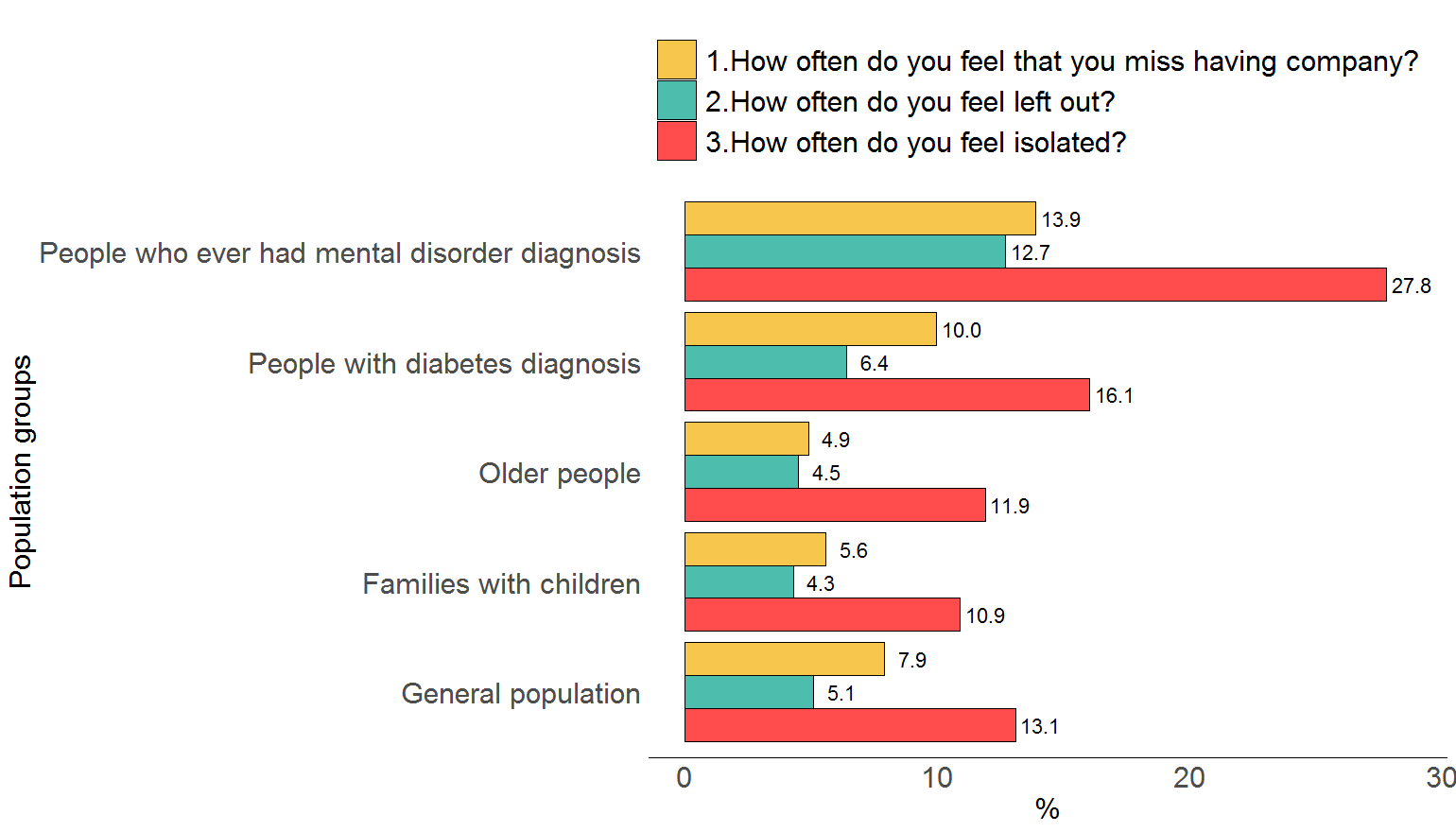How often does the Danish population feel lonely during the corona crisis?
Researchers from the Department of Public Health at the University of Copenhagen are investigating how the corona crisis is experienced and being managed amongst various vulnerable groups in Denmark. This week, results on loneliness are being reported from five population groups: 1) People over the age of 65; 2) families with children; 3) a sample of the general population between the ages of 18 and 85; 4) people with diabetes; and 5) people who currently have or have previously been diagnosed with a mental illness.
In collaboration with Epinion, 100 people from each of the first three groups have answered a questionnaire about loneliness every three days from 20 March until 16 April; since then, they are answering once a week until the end of June 2020. In collaboration with Steno Diabetes Center–Copenhagen and the Danish Diabetes Association, 1,396 people with diabetes type 1 or 2 answered the same questionnaire between 19 and 26 March. The 2,092 individuals with a mental illness were selected from the 11,494 participants who have so far answered the same questionnaire via the project's website.
Participants in the different groups were asked how often they experienced feeling lonely (i.e., they missed having company, felt left out, and felt isolated) based on a validated International loneliness scale (the UCLA Loneliness Scale). Based on these responses, an average level of loneliness was calculated.
Figure 1: Development of loneliness measured on a scale from 0 to 6 in three population groups (6 being most lonely)
Click on the figure to enlarge
The data show that the level of loneliness is relatively constant over time, yet a tendency of decrease in loneliness is observed from 16 April in all three groups.
Figure 2: Loneliness measured on a scale from 0 to 6 in five population groups (6 being most lonely)
Click on the figure to enlarge
Figure 2 shows that, on average, individuals who have / have had a mental illness feel a higher degree of loneliness than the other groups.
Figure 3: Loneliness in different population groups
Click on the figure to enlarge
Percentage reporting 'frequently'
Figure 3 shows the proportion of individuals who answered 'frequently' to the individual questions included in the loneliness scale. Amongst people who have or have had a mental illness, the feeling of being isolated from other people and feeling left out occurred significantly more often than amongst the general population.
This project has partnered with the Danish newspaper Politiken, which is publishing an ongoing series of articles about the corona crisis along with our research results. You can read the second article at politiken.dk.

